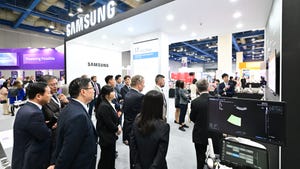
With the start of the NFL football season looming, AT&T and Verizon each made announcements about their respective 5G services working in football stadiums around the country, with the primary goal of generating some 5G marketing momentum.
However, in poking into the details of the operators' announcements, it's clear that it's still very early days in the 5G industry.
First up is Verizon, which announced that its 5G Ultra Wideband-branded service is commercially available in 13 NFL stadiums around the country including MetLife Stadium, a 40-minute drive from the operator's Basking Ridge, New Jersey, headquarters.
Verizon wasted no time in touting the announcement with a pair of new advertisements:
But the reality of Verizon's current 5G deployments are reflected in the details: "Verizon 5G Ultra Wideband service will be available in areas of the above stadiums. Service will be concentrated in parts of the seating areas but could be available in other locations in and around the stadium as well," the operator said.
Verizon is using millimeter-wave spectrum for its initial 5G buildout; transmissions in those spectrum bands can't travel more than a few thousand feet, and cannot penetrate walls or even some kinds of glass. Thus, Verizon's 5G signal in stadiums and other venues may be difficult to find, at least initially.
Not to be outdone, AT&T issued its own 5G-themed NFL announcement, but its deployment is only in one location: the operator's own AT&T Stadium, a 20-minute drive from the operator's Dallas headquarters.
However, where Verizon touted only the availability of a 5G signal in its announcement, AT&T boasted of services and applications that are only possible with 5G.
Specifically, AT&T said it will offer augmented reality videos of Cowboys players including Dak Prescott and Ezekiel Elliott, and said fans will also be able to view live player stats using localized AR content. "You can also dodge virtual defensive robots on the field as you make your way to the end zone in a brand-new game built specifically for this fan activation," AT&T said in a release.
Some of AT&T's AR 5G demos appear similar to the ones that SK Telecom showed off when it launched its own 5G service in South Korea:
Like Verizon's 5G, AT&T's 5G service in the Dallas stadium uses millimeter-wave spectrum. Indeed, the only real difference between the two appears to be nomenclature: Verizon brands its service as "Ultra Wideband" while AT&T brands its service as "5G+."
The irony in Dallas though is that AT&T still is not selling 5G services to actual consumers -- like, the people who go to NFL games. Instead, the operator continues to offer 5G only to select business customers.
All that said, operators around the world have pointed to sports stadiums as an ideal venue to begin showing off the capabilities of 5G service. Whether such demonstrations will convince American football fans to upgrade to a 5G phone remains to be seen.
— Mike Dano, Editorial Director, 5G & Mobile Strategies, Light Reading | @mikeddano
About the Author(s)
You May Also Like












